Skippers
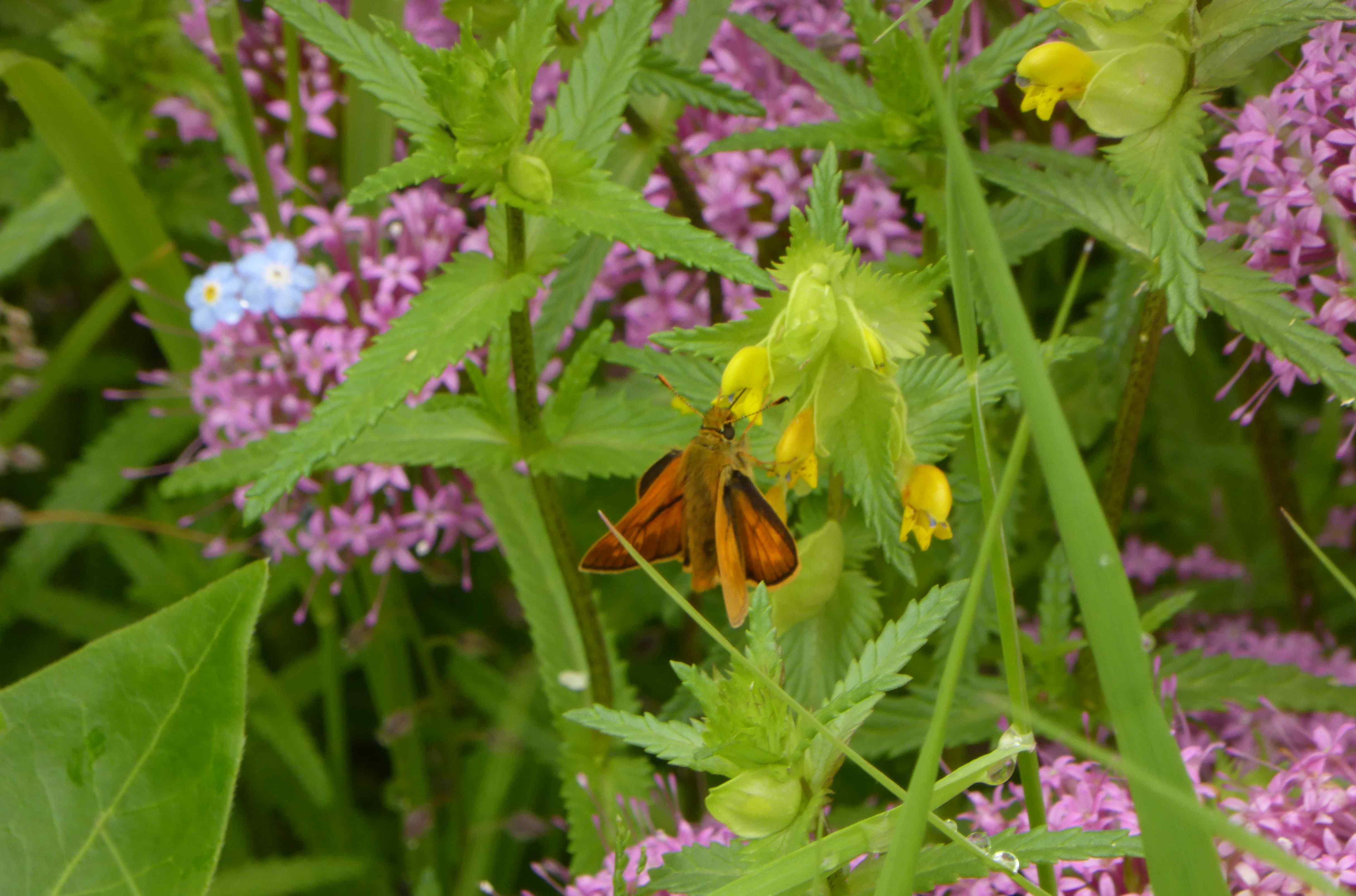 Skippers
Skippers
Family: HESPERIIDAE
A group of tiny moth like butterflies of which we have three species all breeding on site with us. Although drab when compared to the larger, more flamboyant butterflies, they are absolutely delightful and fun to watch, especially the males.
Small Skipper (Thymelicus sylvestris)
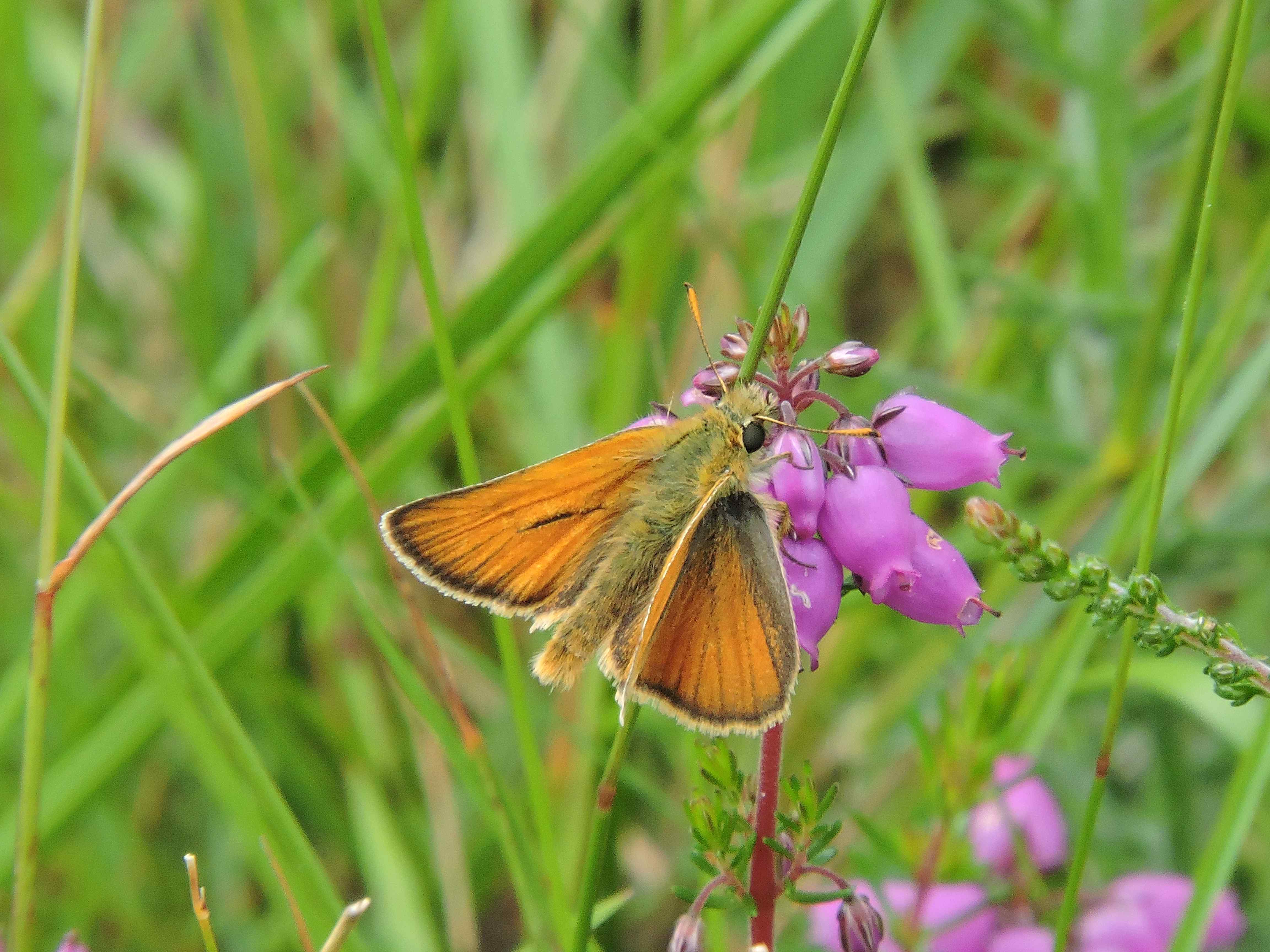 Small Skipper
Small Skipper
What is generally considered to be the most common Skipper in Britain is very scarce in our vicinity and is totally outnumbered by the extremely similar Essex Skipper. I was quite surprised to realise this fact, which can only be verified by careful examination of the antennae from below, a major feat in itself! The tips of the Small's antennae are orange, unlike the black tips of the Essex. (See Essex Skipper for a comparison photo).
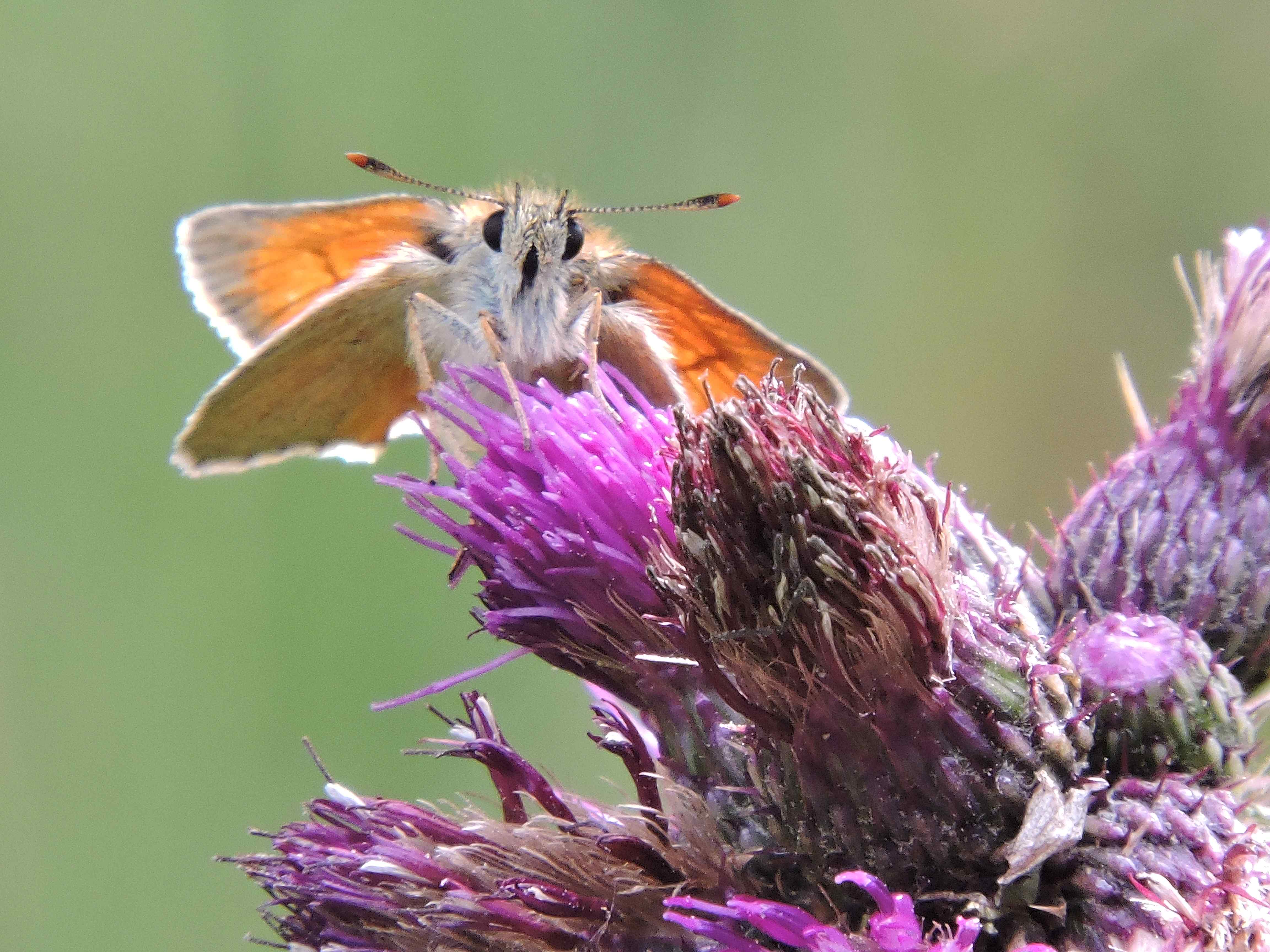 Small Skipper antennae
Small Skipper antennae
CURRENT STATUS: uncommon - mysteriously outnumbered by the closely related Essex Skipper.
LARVAL FOODPLANT: Yorkshire fog grass.
FAVOURED NECTAR PLANTS: Marjoram; scabious; thistles; knapweed; buddleia.
WHEN SEEN: July and August.
SPECIALIST REQUIREMENTS: Clumps of dead grass stems must not be cut back and tidied over winter, as the eggs are laid in the sheath of the stems, and the undeveloped larvae stay within the sheath until the spring.
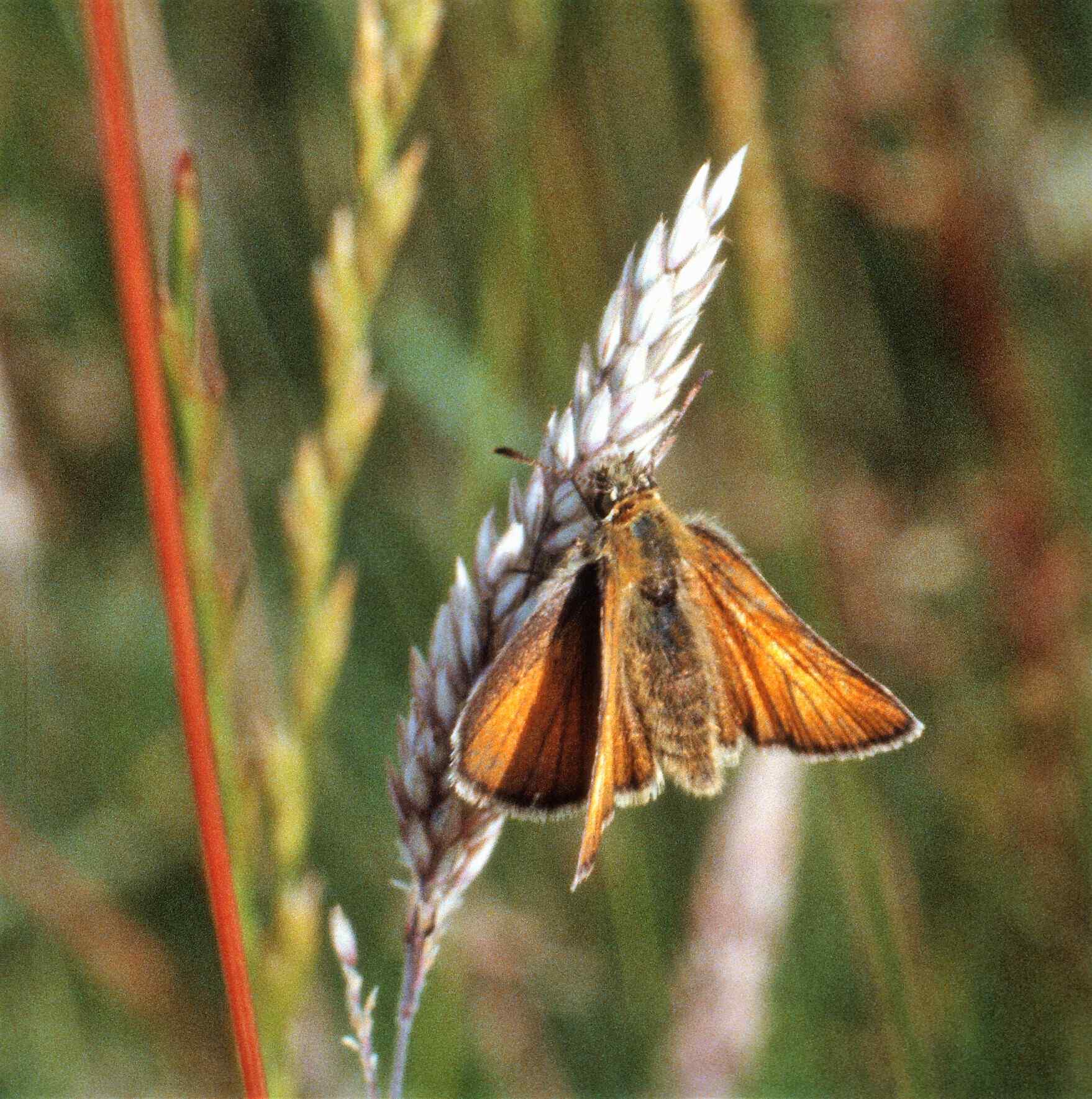 The female alights on the flower head of the Yorkshire fog and then crawls backwards down the grass until she feels the sheath with her abdomen, thence laying six or so eggs in the sheath.
The female alights on the flower head of the Yorkshire fog and then crawls backwards down the grass until she feels the sheath with her abdomen, thence laying six or so eggs in the sheath.
Essex Skipper (Thymelicus lineola)
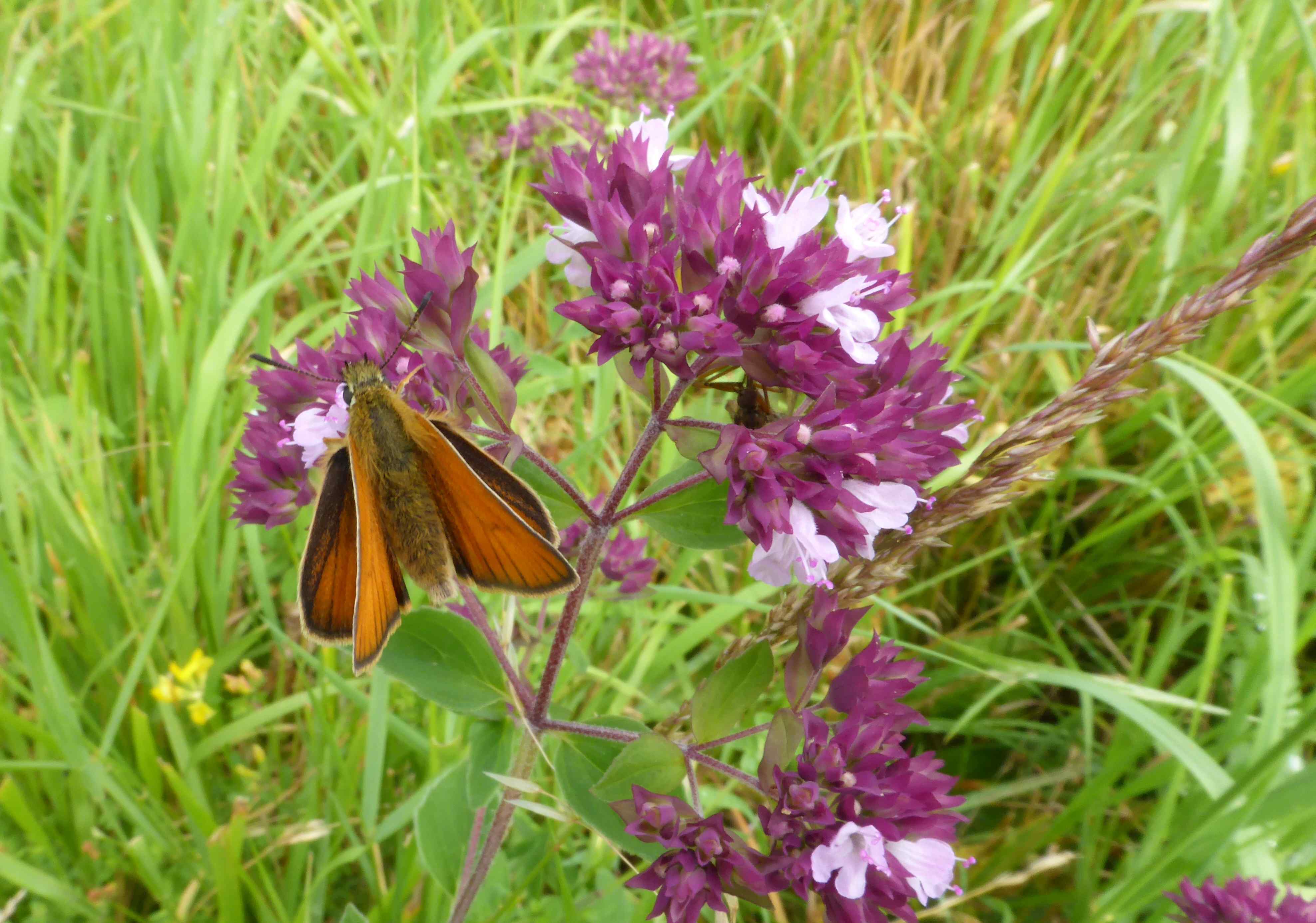 Essex Skipper
Essex Skipper
On the photo you can clearly see that the underside of the antennae have very defined black tips to them - lacking in the Small. It's even clearer in real life (the difficult bit is getting close without disturbing them!)
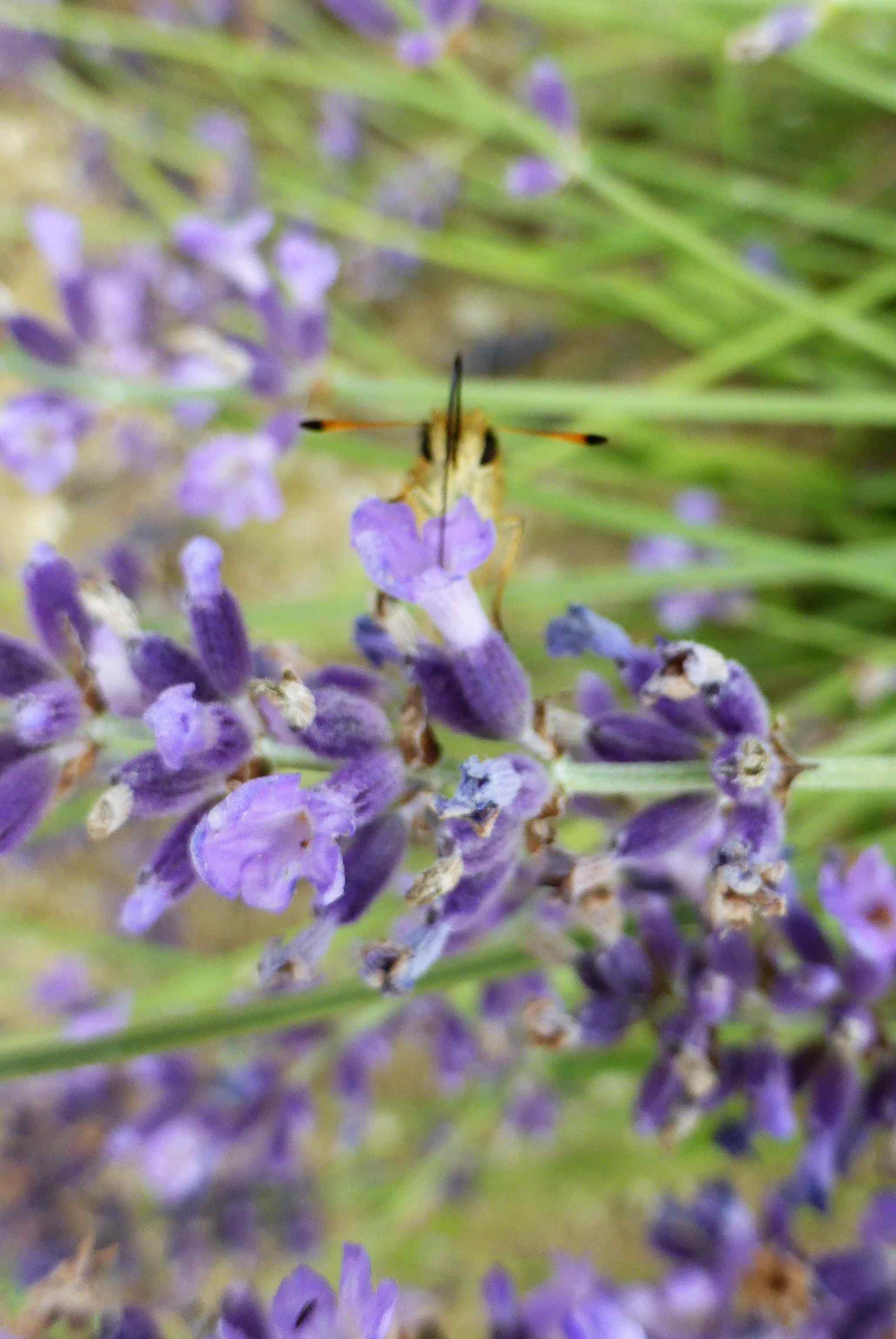 The underside of the Essex Skipper's antennae look as if they have been dipped in ink.
The underside of the Essex Skipper's antennae look as if they have been dipped in ink.
CURRENT STATUS: an excellent self contained colony has been established, with it acquiring the highest Lincolnshire one day count in 2019.
LARVAL FOODPLANT: various coarse grasses.
FAVOURED NECTAR PLANTS: scabious; lavender; clover; knapweed; creeping thistle; marjoram; verbena bonariensis.
WHEN SEEN: late June and July.
SPECIALIST REQUIREMENTS: grass management and egg-laying procedure as for Small Skipper.
LARGE SKIPPER (Ochlodes venata)
The male is distinguished by the heavy diagonal black bars across the forewings - these release pheromones to attract the females during courtship.
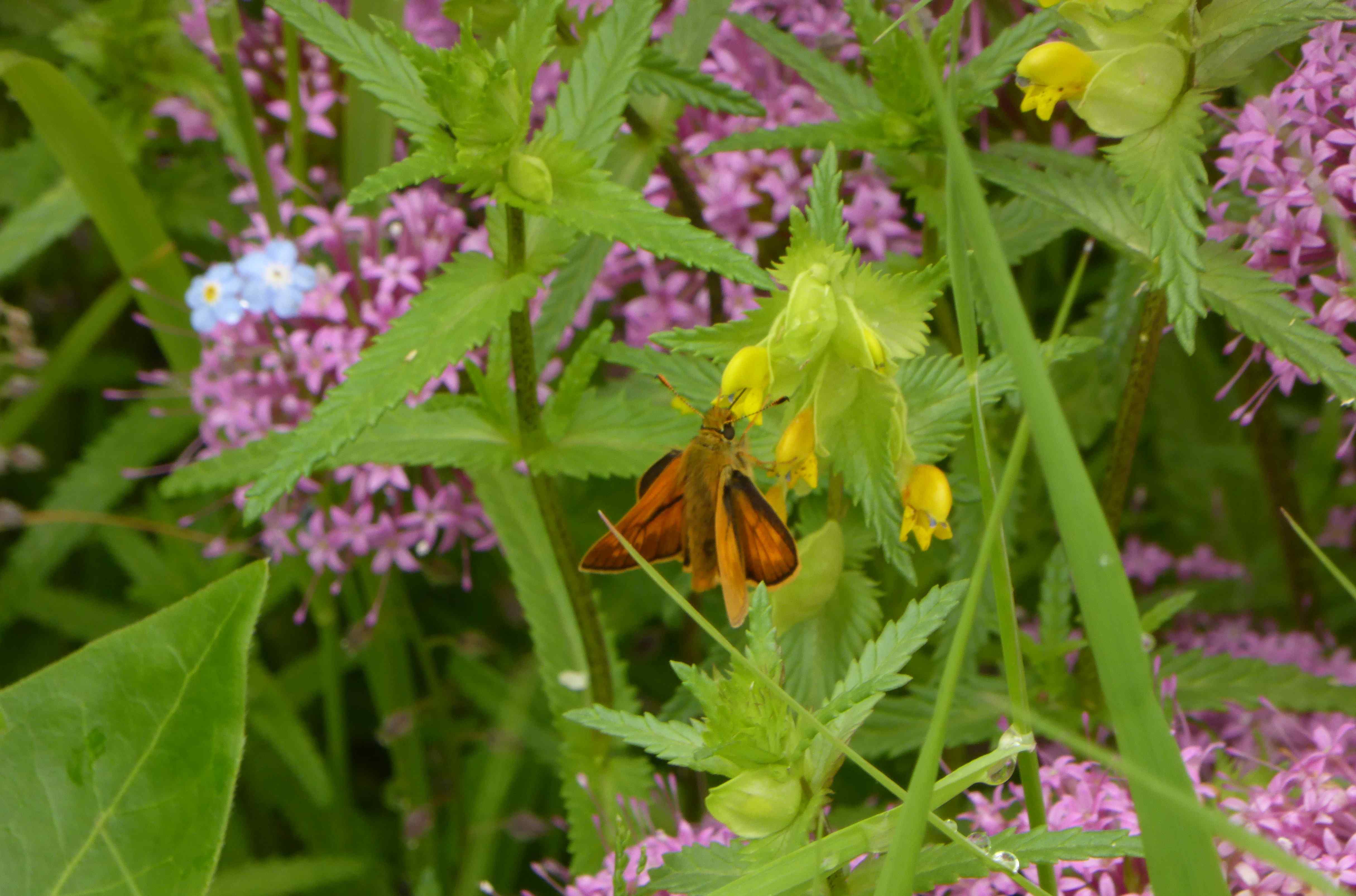 Male Large Skipper
Male Large Skipper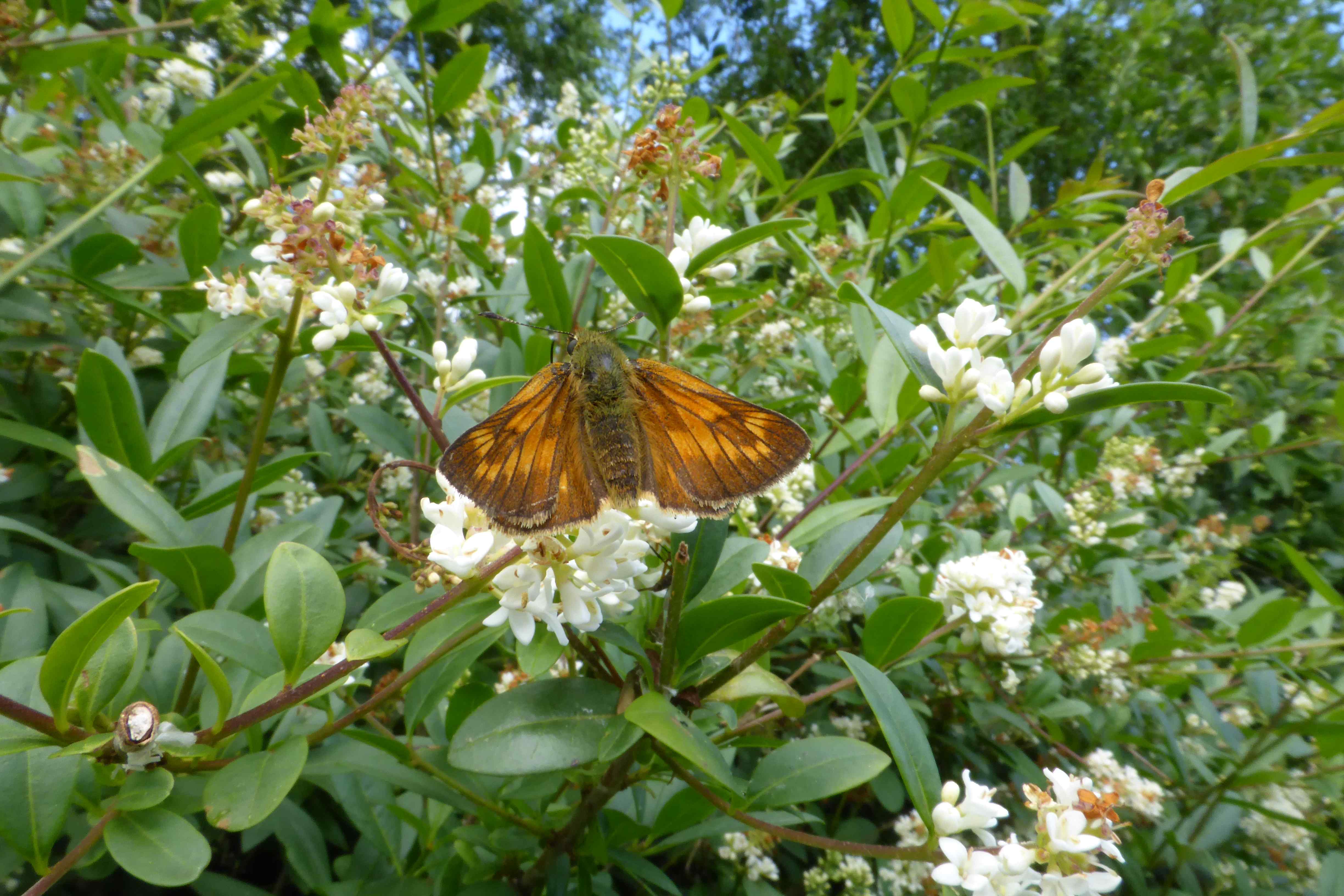 Female Large Skipper
Female Large Skipper
Not found in gatherings like the other two Skippers, these being more singular and the males being highly territorial. They are a joy to watch as they perch atop a favourite vantage point such as a tall flower, and lurch at anything that passes through their territory at amazing speed which makes them very difficult to follow, especially if they encounter another male! However, they always return to the same spot.
 Unique to Skippers, the pose of raising the forewings above the hindwings
Unique to Skippers, the pose of raising the forewings above the hindwings
CURRENT STATUS: breeds on site. Recent years have been very poor for this Skipper, but they unexpectedly came back with a vengeance in 2021, with their second best season to date.
LARVAL FOODPLANT: cock's-foot and other grasses.
FAVOURED NECTAR PLANTS: marjoram, bird's-foot trefoil; purple loosestrife; red valerian; lavender; ragged Robin; crosswort.
WHEN SEEN: mid June to late July.
SPECIALIST REQUIREMENTS: isolated clumps of tall grasses are best for egg-laying and for the larvae to feed, develop, and hibernate in.